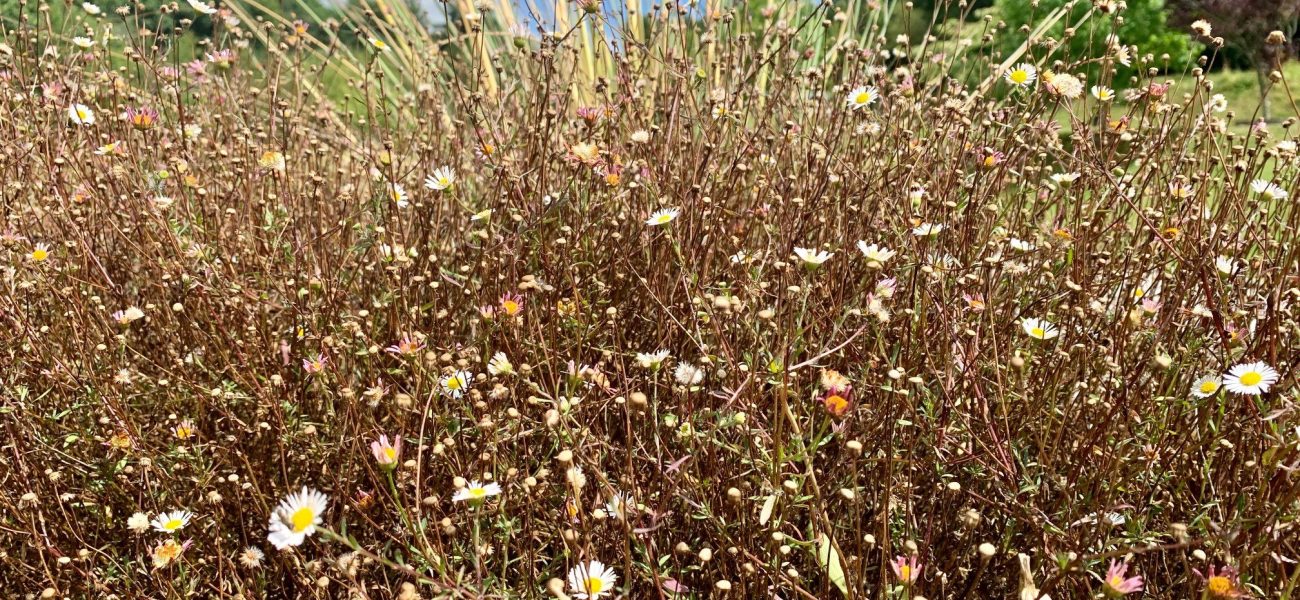
Dealing with Drought
Having experienced a dry winter, spring and now summer, it's beginning to take its toll on our gardens and plants. Faded lawns, trees shedding their leaves and summer blooms beginning to go over. In this article we look at what we can do to help our gardens with practical advice and tips.
With climate change manifesting itself clearly in our weather, drought, flood, heatwaves, and storms present ever increasing challenges to gardeners, and we can no longer expect that next year will be “normal”. We are going to have to adapt the way we garden. Selection of appropriate plants will be key to this. Right now, drought is the pressing issue. There are three stages in managing drought. Preparation, coping during the drought, and managing the aftermath when rain arrives - which it will.
Preparation includes doing whatever you can to store water. As we swelter in this July’s heatwave just think of the gallons of rainwater that have disappeared down your gutters. Do what you can to save as much as you can in water butts, barrels, dustbins, or whatever. Be mindful of safety with large containers of water; a simple lid or mesh over the top will stop small creatures falling in and drowning. Improve the water-holding capacity of your soil by adding organic matter. This is not an instant solution but forking in well-rotted compost in the autumn will help conserve moisture and feed your soil. Mulch or top dress your beds with a generous (5cm or 2”) layer of organic matter, but only when the soil is already thoroughly wet. You want to trap the water in.
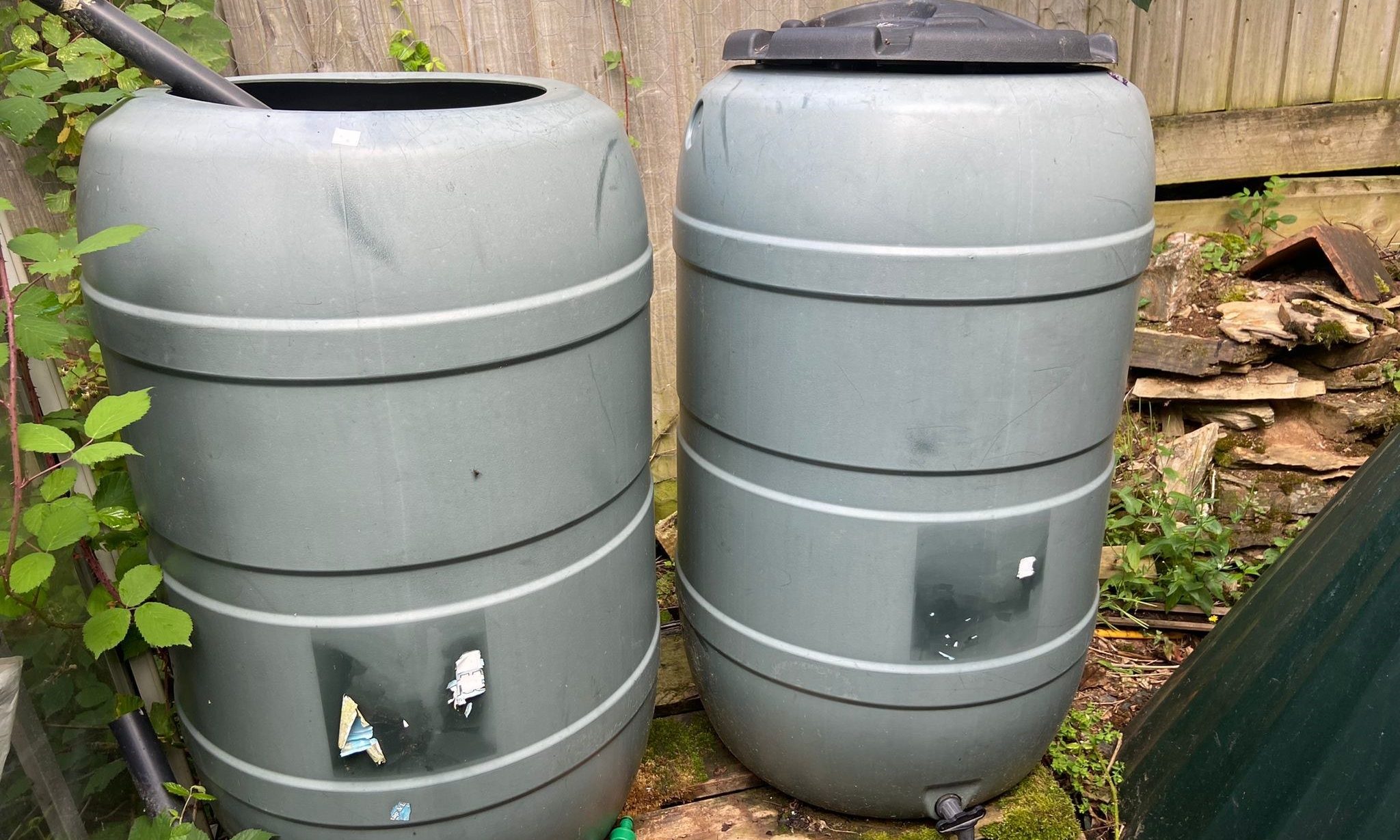
In the throes of drought, the focus must be on watering. The aim is to get plants through with minimal damage. Watering in the morning or evening is recommended as there is less loss through evaporation. Evening watering means the plant has the whole night to plump up before it starts to lose more water through transpiration in the sun. On the other hand, damp soil overnight is more likely to draw out slugs and snails. Here at the nursery, we have to water during working hours, starting first thing in the morning and continuing throughout the day, with some plants requiring a second soak in the evening. It has been a challenge to keep everything well-watered and healthy, with staff coming in early and leaving late to look after the plants.
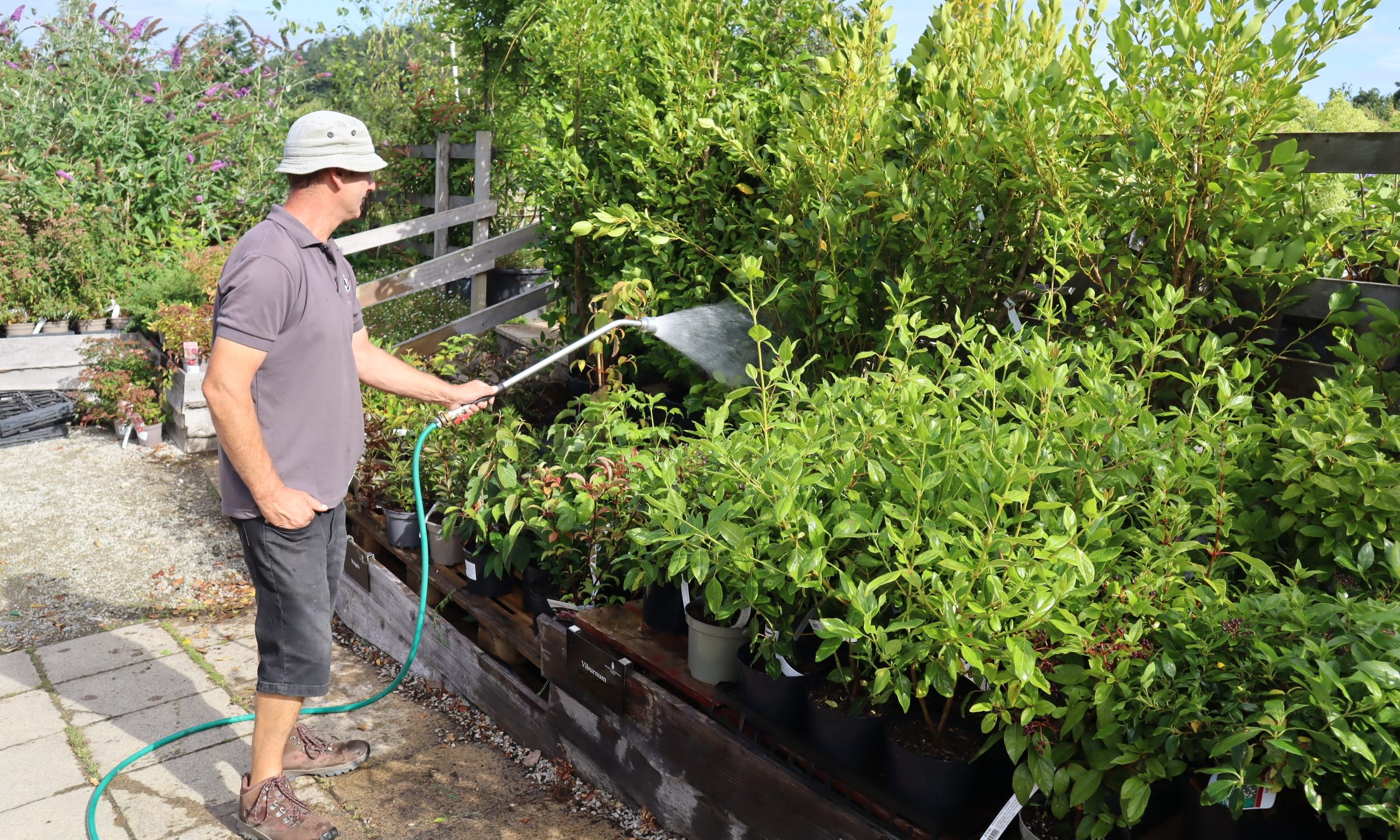
Plants need water at their roots. A sprinkle of water may rinse dust off the leaves but will not keep a plant hydrated. A thorough soaking so water penetrates deep into the soil is what’s needed. It will encourage roots to stay deep in search of water. Prioritise plants that need water most, especially those which have been recently planted and do not yet have established root systems. This will include newly planted trees and shrubs which will fail without adequate water in their first year. Similarly, tiny seedlings and bedding plants will die quickly without water. For the rest of the garden, provided you have access to sufficient water, a sensible plan is to divide your garden into sections and soak each section in rotation. Established plantings should be able to cope without water for several weeks. Plants may appear to wilt or droop a little during the day but perk up overnight, and plants watered daily will develop no tolerance to going without water and end up being more vulnerable to drought. Direct water to the base of the plant rather than overhead. This is especially important for large-leaved plants, where the foliage acts as an umbrella diverting water away from the root zone. Water slowly to make sure it is soaking in and not running off. Some plants will show scorching, or crispy leaves. Leave them on for the time being, they provide a degree of shade for leaves beneath. Do not feed your plants during a drought. Many trees will shed leaves, this is a normal response.
Plants held captive in pots are a different matter, they are entirely dependent on us for every drop of water and are especially vulnerable. Once the compost in a pot has dried out, it can become difficult to re-wet, and may shrink from the sides so water runs straight out leaving the rootball dry. Modern peat-free composts seem particularly prone to this so try not to let pots dry out. Using saucers underneath the thirstiest pots will help. Filling a large bucket or wheelbarrow with water and soaking the whole pot for half an hour is another solution. An additional problem is that the whole pot and its contents can become very hot, and hot wet soil leads to root rot which further compromises the plant’s ability to cope and can cause death. This can be alleviated to a degree by grouping pots together so there is less sun on the sides of the pot or moving pots out of full sun for the time being.
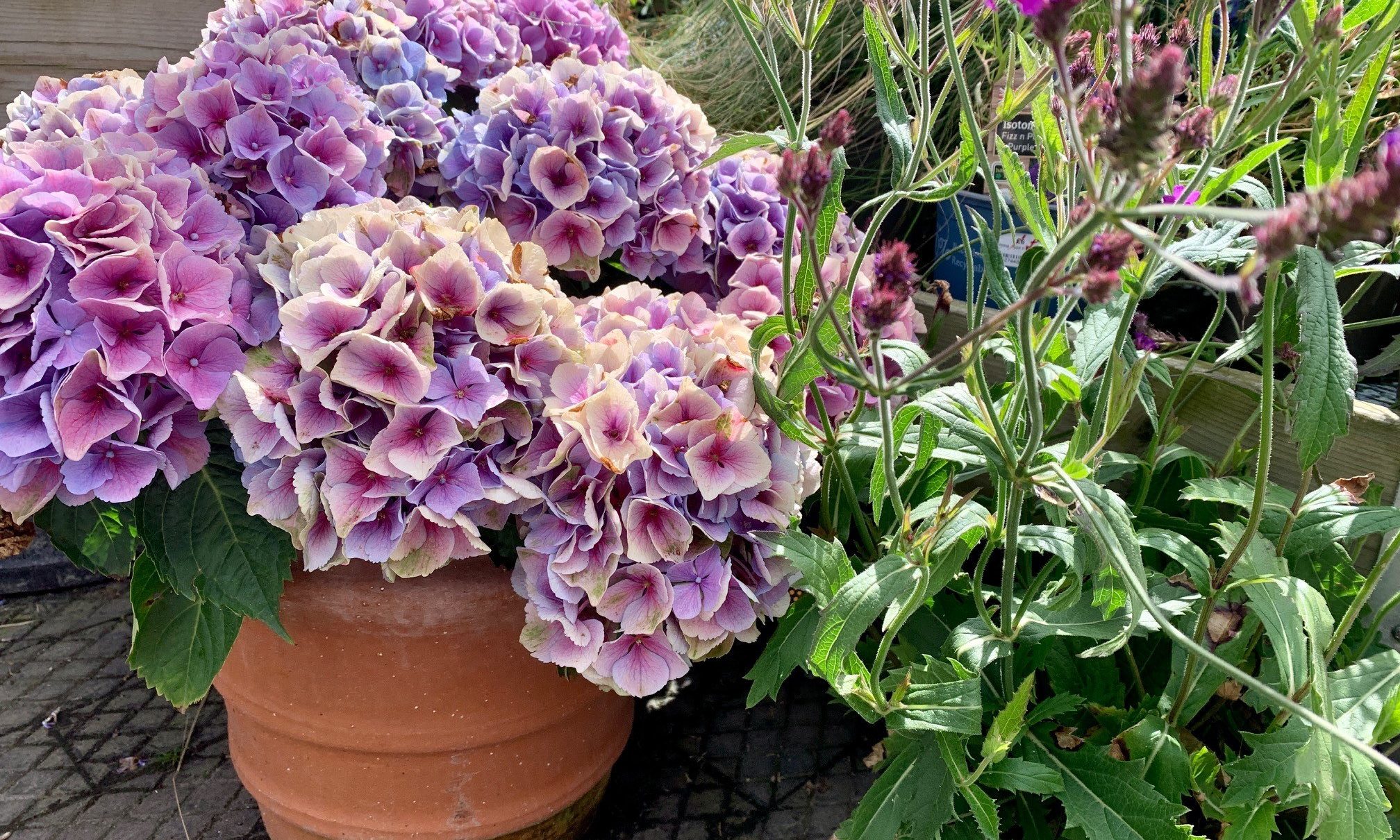
Once the drought is over and rain falls, often in torrents, plants will start to recover. Some will not but give them all time before pronouncing them dead prematurely. Some plants will enter dormancy early and reappear as good as new next spring. Taller plants which have not been adequately staked may flop. Anticipate this and stake them before the rain; once they go turgid they become brittle and harder to lift without breaking. This is also the time for a tidy up, removal of dropped leaves and damaged foliage, but above all a critical review of how your garden has coped. Note which areas have become most desiccated, and which have suffered least. You might consider replanting your moisture-lovers into one area where they can be given optimal conditions in improved soil, with maybe a seep hose installed.
You may decide to gradually fill your garden with plants that need little or no watering. Thirty years ago, the late Beth Chatto pioneered the idea of making a garden which would thrive and look good without irrigation. In 2018 her Essex garden had a mere tenth of an inch of rain throughout the whole of June and July, and more than 50 consecutive days without any water at all, but still looked good. However, the ground was extremely well drained, the soil poor and stony, and the plants selected specifically for those conditions and well established. It is unlikely that plants adapted to such extreme conditions would like a wet Cornish winter in ordinary soil, so exercise caution in your selection and do not rely simply on a label that says, “drought tolerant”. Small plants will establish more easily than larger ones. If you are planting trees this autumn, get them in before Christmas if you can, and if they are a distance from a water source you might like to look at one of the watering pouches that fits around the tree trunk. Establishment is key for all plants to tolerate drought, and for this reason it is better to plant in the autumn to give maximum time to develop a good root system. However, Mediterranean aromatics such as lavender and rosemary are best left until spring when the ground is warmer. Nothing is ever simple!
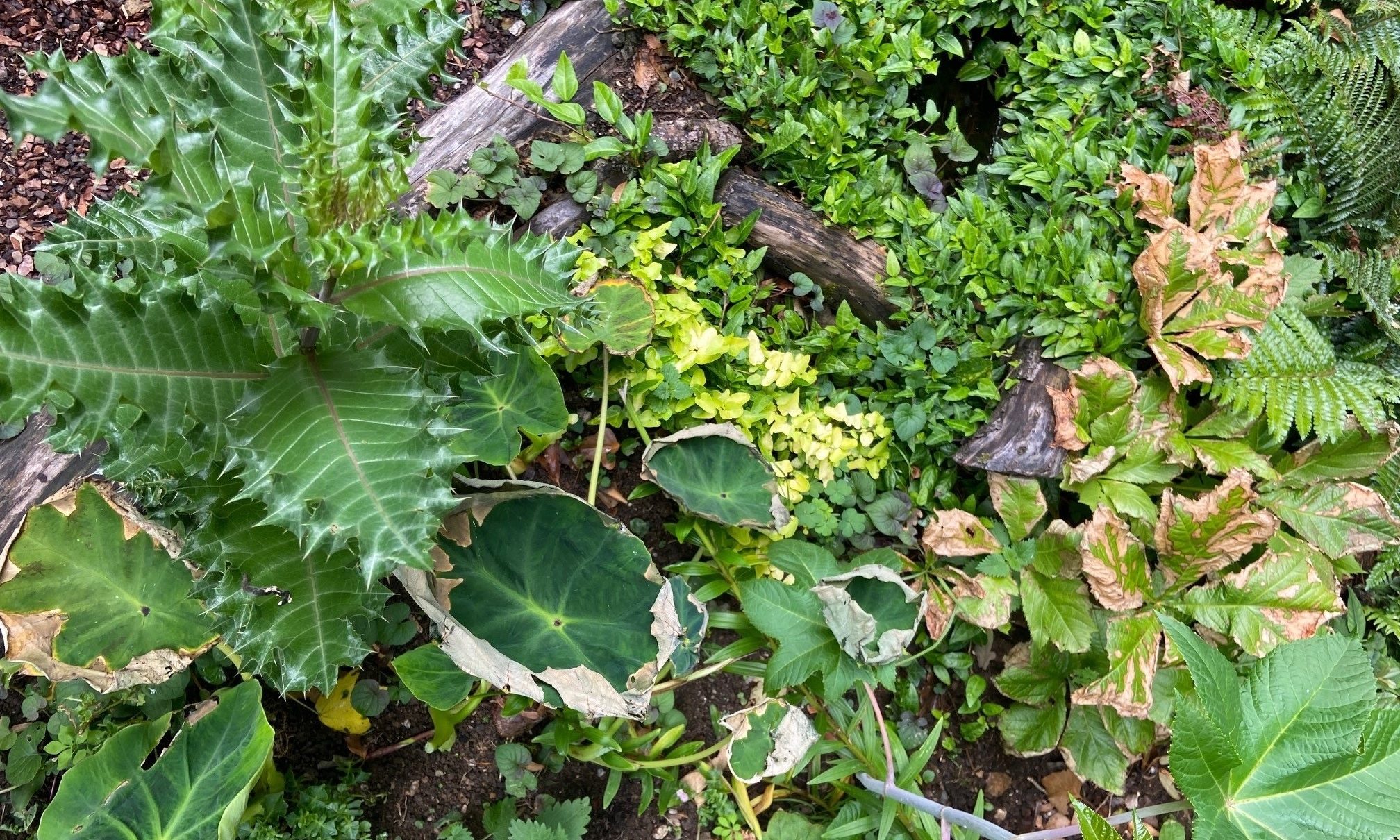
This picture shows Rodgersia podophylla and a colocasia looking wretched, but Acanthus sennii, from Ethiopia, looking happy.



